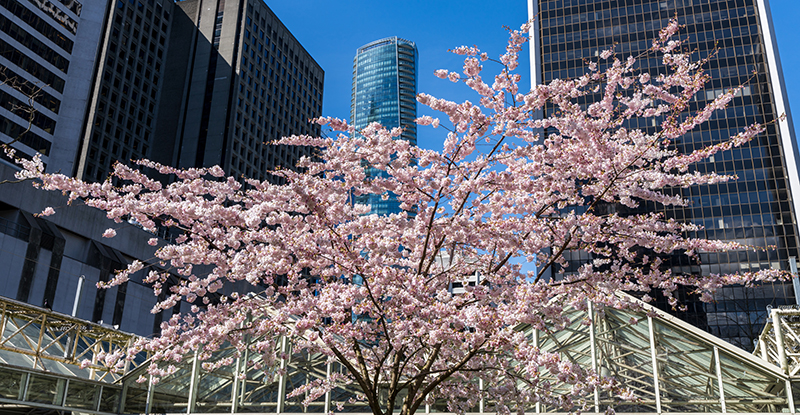
An economic update on consumer spending, growing labour shortages, and inflationary and interest rate pressures.
Household spending picks up pace entering spring
After a downward dip due to restrictions imposed to combat the Omicron wave in January, consumer spending picked up speed in February and March. In fact, Canadian consumer spending was up by around 30% at the end of March compared to pre-pandemic (2019) levels.
The significant increase in oil prices and some other non-discretionary costs such as shelter and food helped push spending up. However, the increase also reflects a broader growth in the number of transactions Canadian consumers are making as restrictions ease and people begin to travel more. In fact, for the first time since early 2020, travel spending was well above pre-shock levels last month. This has also helped hospitality businesses see a significant rebound in consumer spending, both inside and outside Canada.
As employment booms in BC, businesses facing growing labour shortages
BC’s labour market has continued its strong recovery in 2022, with the province adding 40,500 jobs to its workforce in the first three months of the year. This job growth continued to lower BC’s unemployment rate, at 5.1% as of March. While full-time positions initially were slow to recover, both part-time and full-time positions are now well above pre-pandemic levels. In March, full-time positions were up by 3.6% compared to January 2020, while part-time positions were up by 3.2% over the same period.
Another signal of BC’s workforce recovery is that employment has grown at a more rapid pace than our population over the past two years, which indicates strong labour demand in the province despite the significant economic turmoil over the pandemic. Between January 2020 and March 2022, BC’s population grew by 3.1% compared to a total employment increase of 3.5%.
Further, after falling significantly in 2020, BC’s labour force participation rate has fully recovered. In March 2022, the provincial participation rate was 65.4% compared to 64.8% in January 2020.
Given that employment has grown at a more rapid pace than population and the participation rate recovery, there is very limited slack in our workforce, which has resulted in rising challenges businesses face finding workers.
Perhaps the clearest sign of the growing labour shortages in the province is the large increase in job vacancy rate. BC’s labour shortage reached record highs in 2021, and while down slightly from the peak of 6.7% in Q3 2021, the 6.1% job vacancy rate in Q4 2021 represented nearly 149,000 unfilled jobs. The previous high was set in Q3 2018, at 4.8%.
High inflation, strong employment expected to force interest rates higher
Volatile and rising commodity prices, global supply chain issues, and renewed consumer demand has helped drive inflation to new highs in 2022. Canada’s consumer price index (CPI) was up by 5.7% in February 2022 compared to February 2021, driven by increases in the price of transportation (+8.7%), food (+6.7%) and shelter (+6.6%). BC’s CPI was also up, but at a slightly lower level of 4.7% over the same period.
With rising inflation and a robust labour market, the Bank of Canada has increased interest rates twice in the past month and a half. The first interest rate increase came on March 2, with the key overnight rate up 25 basis points to 0.5%, with the second increase on April 13, up another 50 basis points to 1.0%. As the economy continues to expand and inflationary pressures mount, the expectation is that Bank of Canada will further increase interest rates this year.
Aaron Aerts is CPABC's economist.



